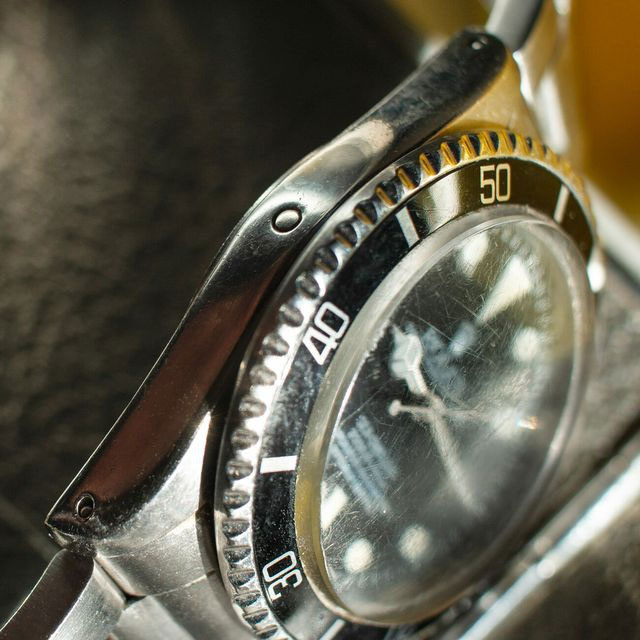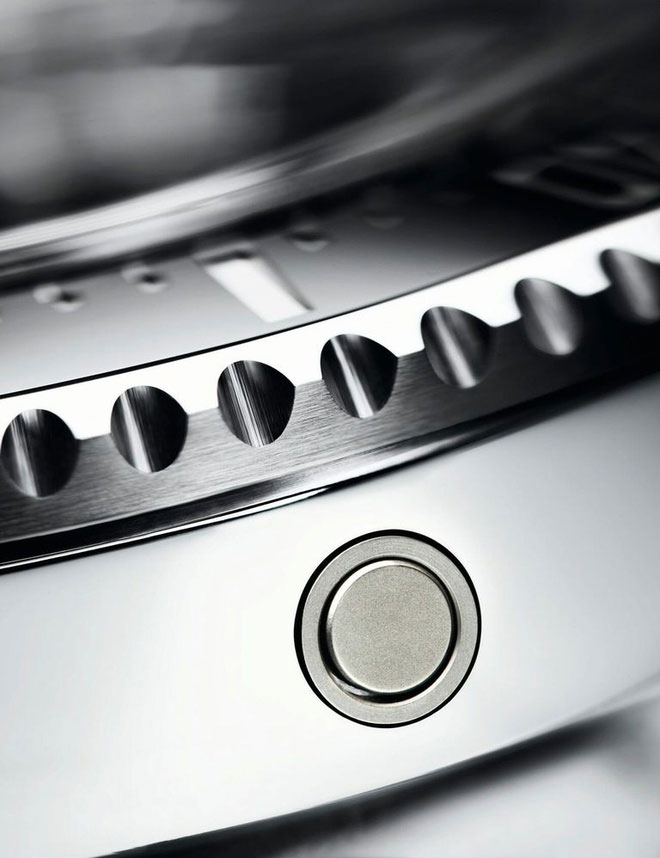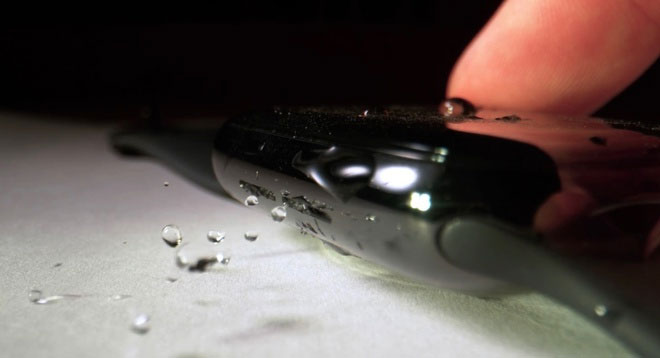Expensive dive watches often feature a small hole on the case. This detail serves a diving purpose but is not designed for waterproofing.
Rolex dive watches are typically made from ultra-durable materials with meticulous details. So, what is the purpose of the hole on the side of the watch case?
According to Gear Patrol, this small hole is commonly referred to by divers as “helium escape valve.” It is used to assist professional divers. This detail was co-invented by two famous Swiss watch brands, Rolex and Doxa, in 1960.
The helium escape valve is a feature of dive watches that helps relieve internal pressure within the watch case when professional divers operate at depths of up to 300 meters, with pressures reaching 30 ATM. Without this feature, the watch face and internal components could be blown apart due to the pressure from helium gas.

The hole on the side of the watch case helps release helium bubbles during diving. (Photo: Gear Patrol).
When diving deep, divers breathe a gas mixture of oxygen and nitrogen. Therefore, when they ascend, they must wait to allow their body pressure to stabilize. If pressure changes too rapidly, nitrogen molecules in the gas mixture they inhaled can form bubbles in their blood.
However, for professional divers, waiting to stabilize pressure for several days is too long. Instead, they are placed in a hyperbaric chamber, filled with a helium and oxygen gas mixture. Helium molecules replace nitrogen in the blood, significantly reducing the time needed for pressure stabilization.
Helium gas molecules are very small, allowing them to easily pass through the waterproof components of high-end watches. When returning to the surface, with lower pressure, helium bubbles expand and can damage the internal mechanisms.
The valves on watches are typically constructed using springs, mechanical seals, and a button that allows helium to escape when necessary. It can be an automatic function, as seen in the Rolex Sea-Dweller model, or in the form of a protruding button that needs to be manually opened and closed, like the Omega Seamaster 300m.

Helium escape valve on a Rolex dive watch. (Photo: Rolex).
However, this feature is not commonly used by professional divers. According to commercial diver Benjamin Lowry, he always stores his collection of expensive watches in a box if he has to work continuously underwater. With prices that can exceed $20,000, there’s no reason to use them for harsh tasks like diving.
Moreover, these dive watches require a degassing process, which typically lasts several hours to completely eliminate any helium gas inside. Therefore, expensive watches are not well-suited for continuous underwater work.
In reality, this invention by Rolex and Doxa is very useful for Navy personnel who often have to work underwater for months. However, for average users, this detail does not provide much practical value.

Apple Watch has an interesting mechanism to expel water and protect the watch from moisture. (Photo: Slo Mo Guys).
Smartwatches like the Apple Watch also have a fascinating mechanism to expel water. Although the watch is designed to be waterproof, there is still an opening on the case for the speaker.
After exiting underwater mode, the Watch activates the speaker and emits a loud sound. This sound wave pushes any remaining water out of the speaker slot, ensuring the safety of the Apple Watch.




















































